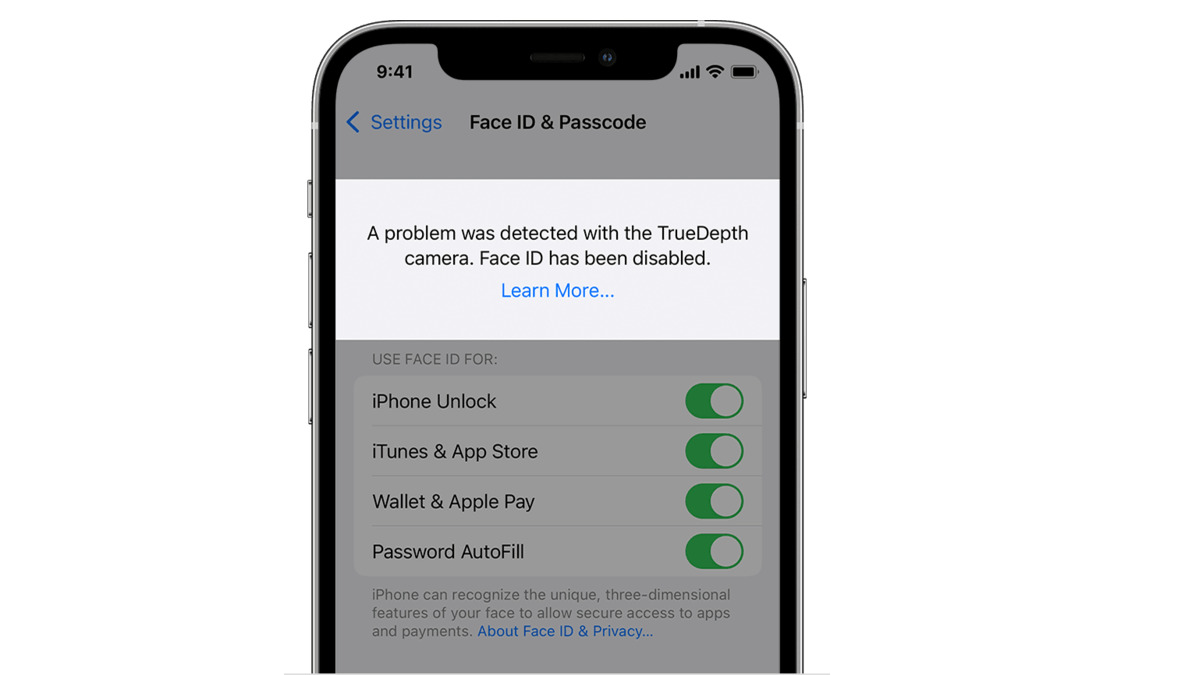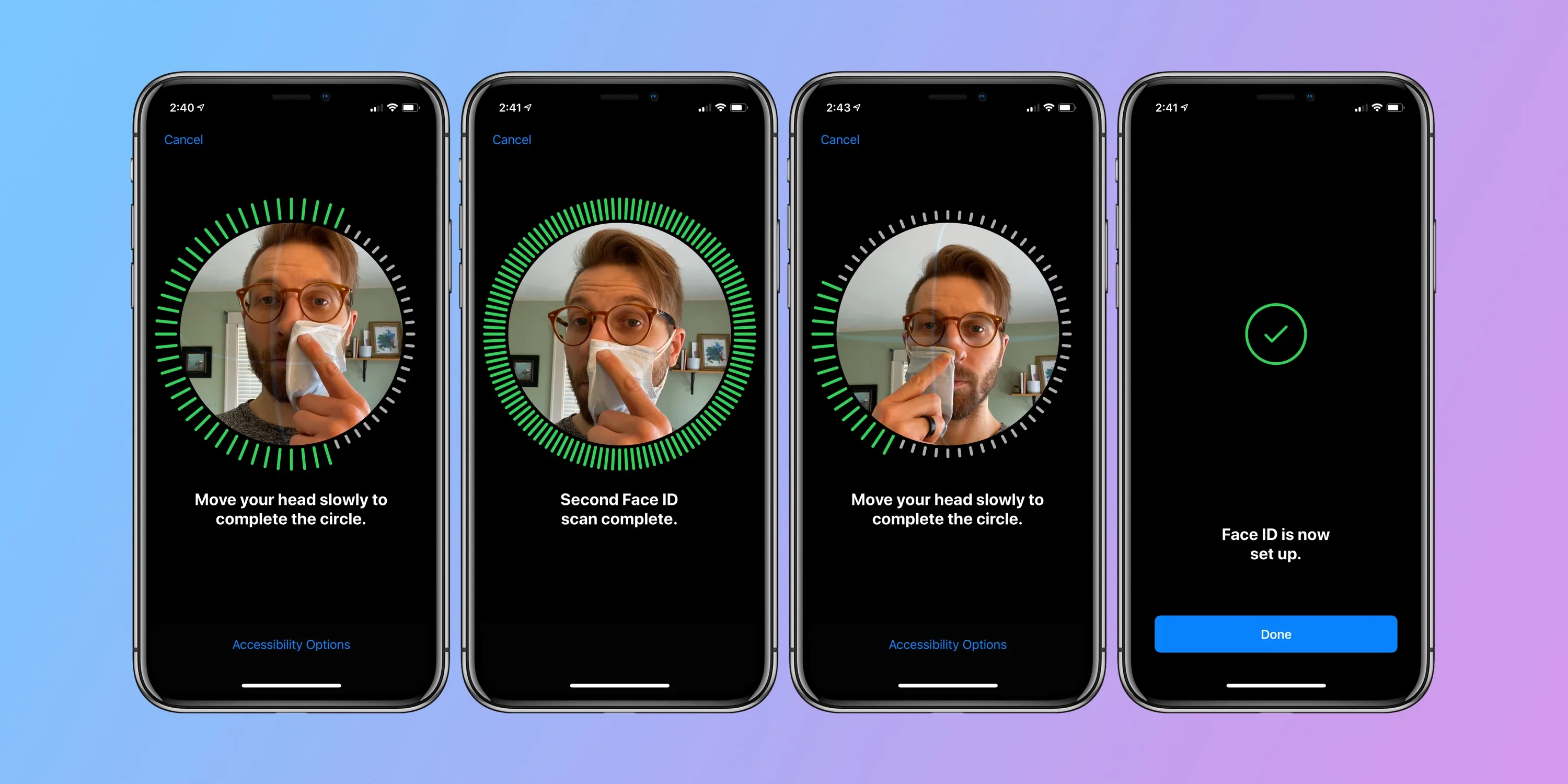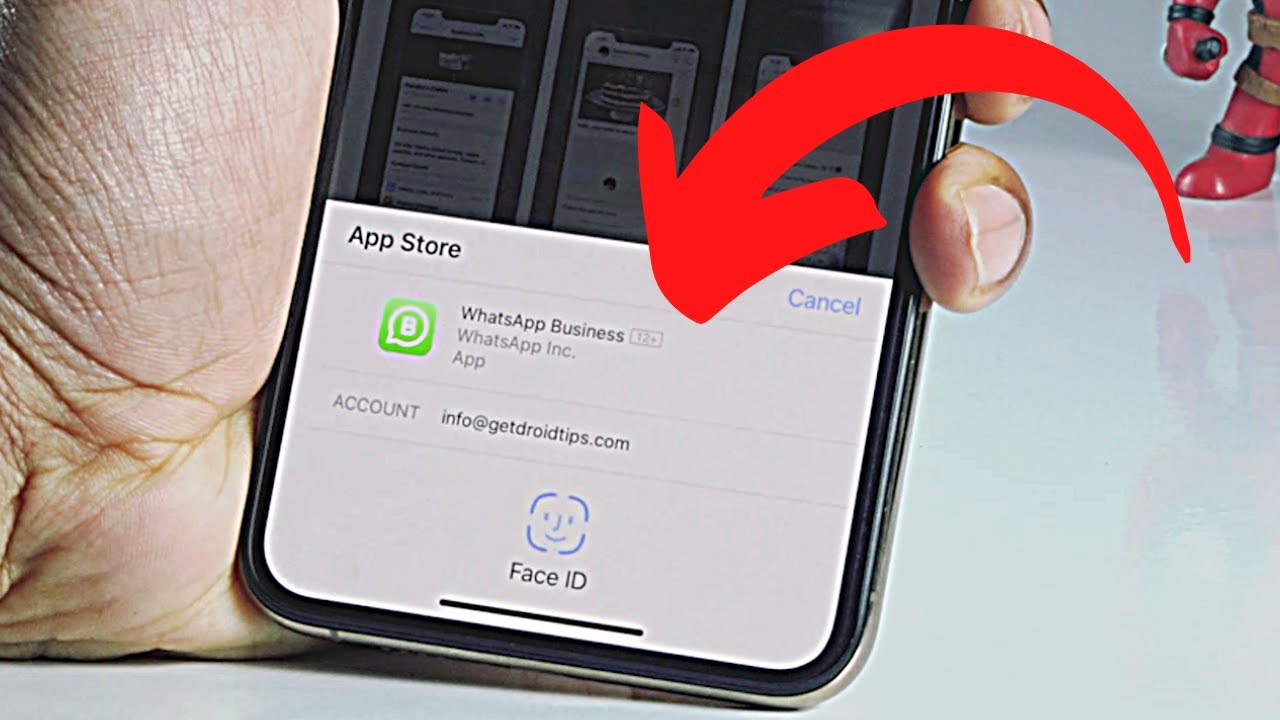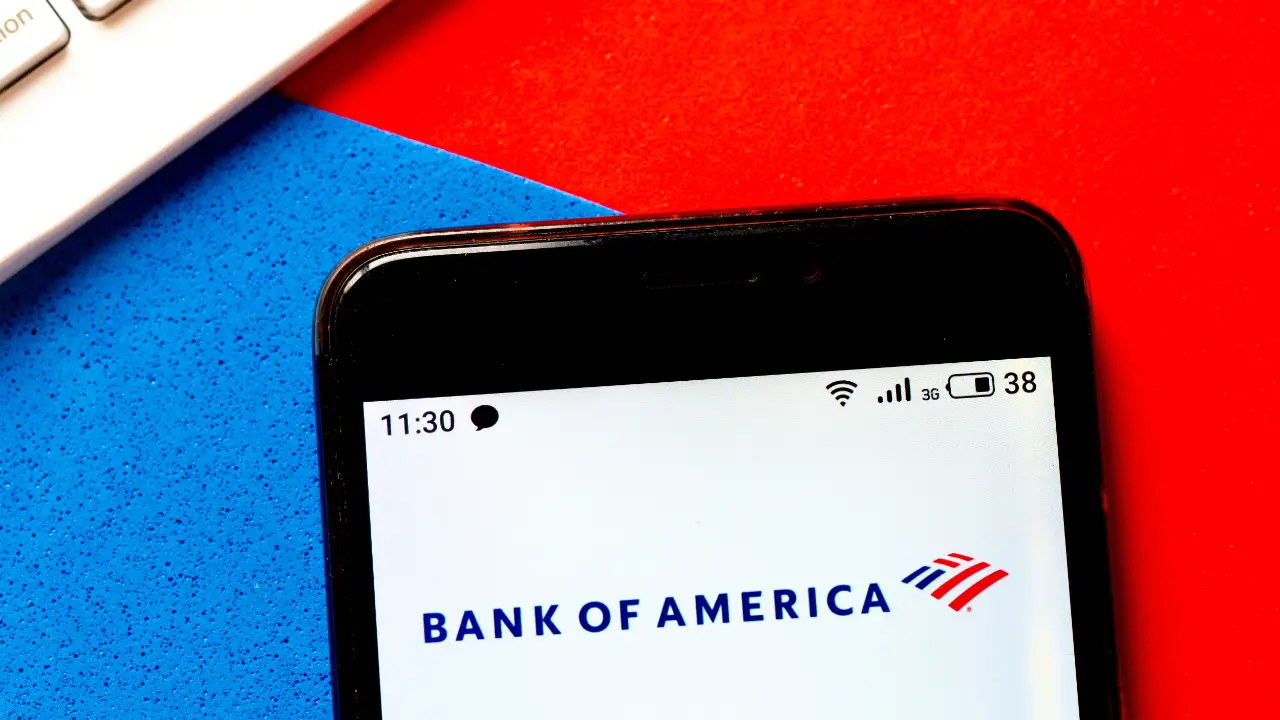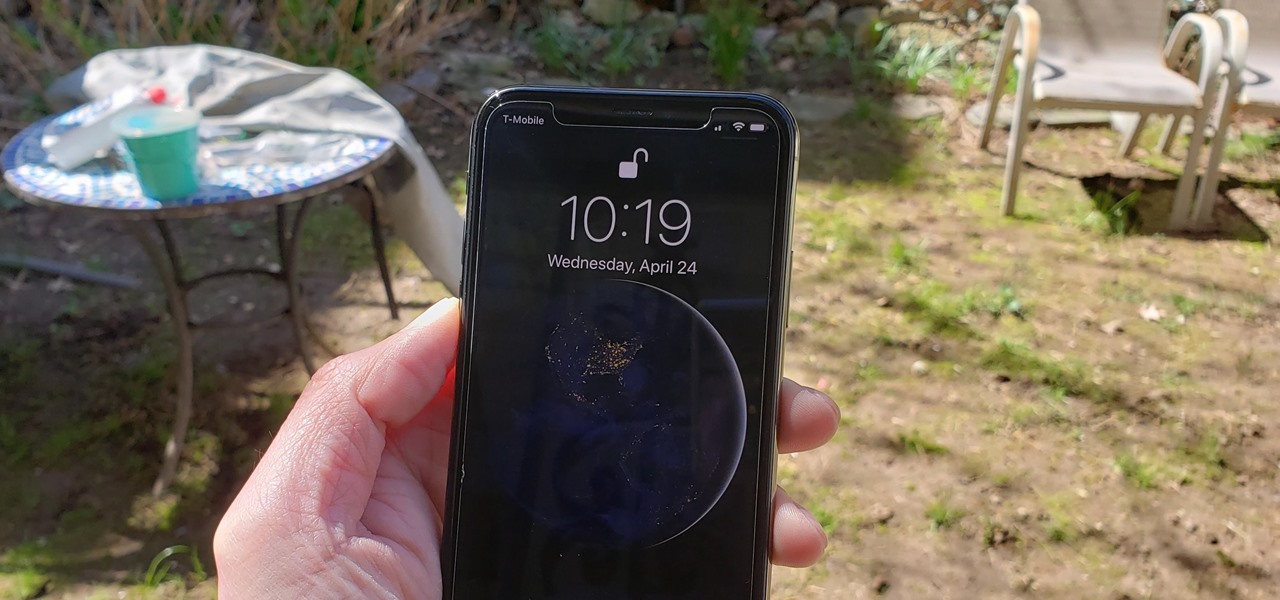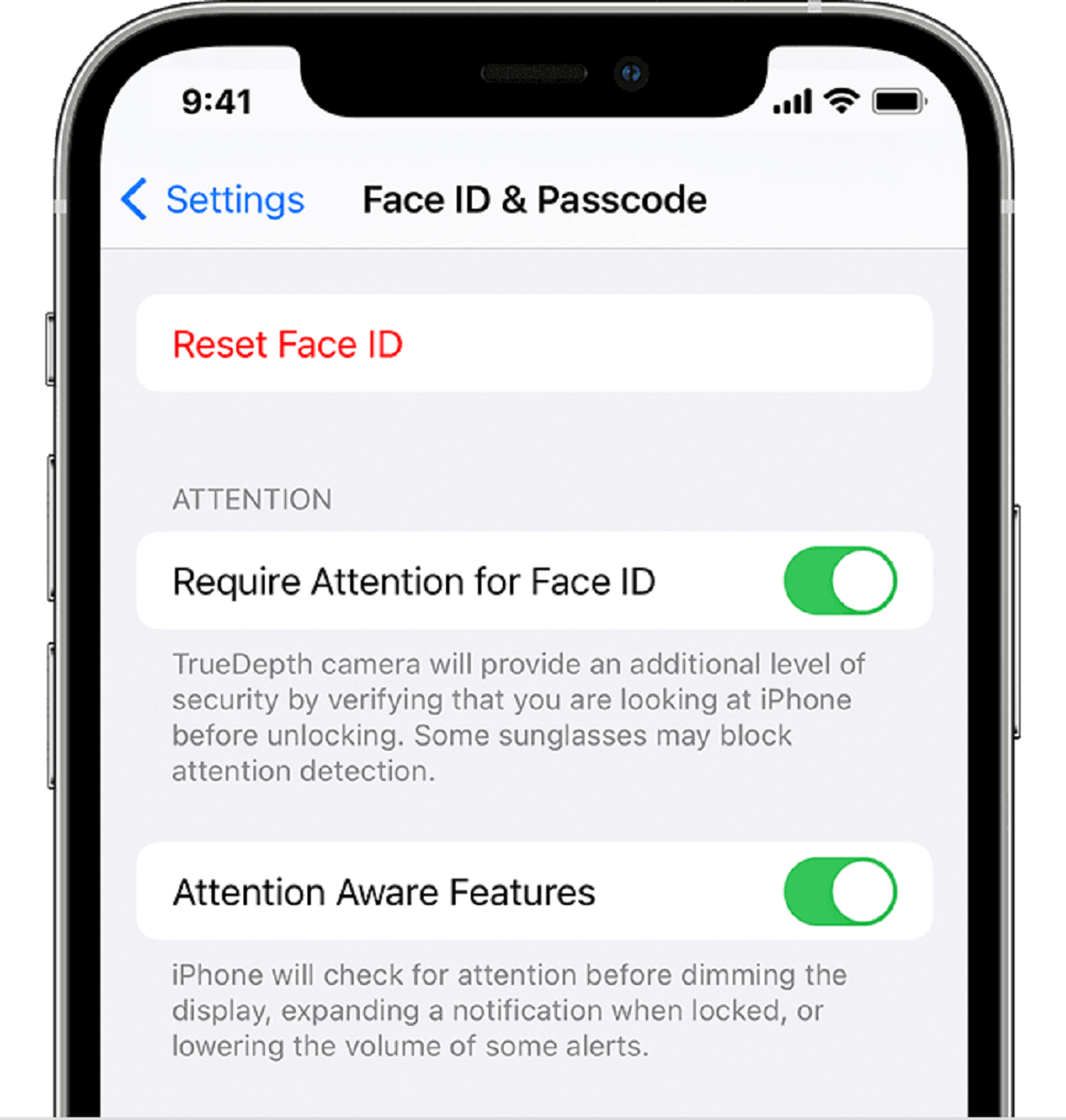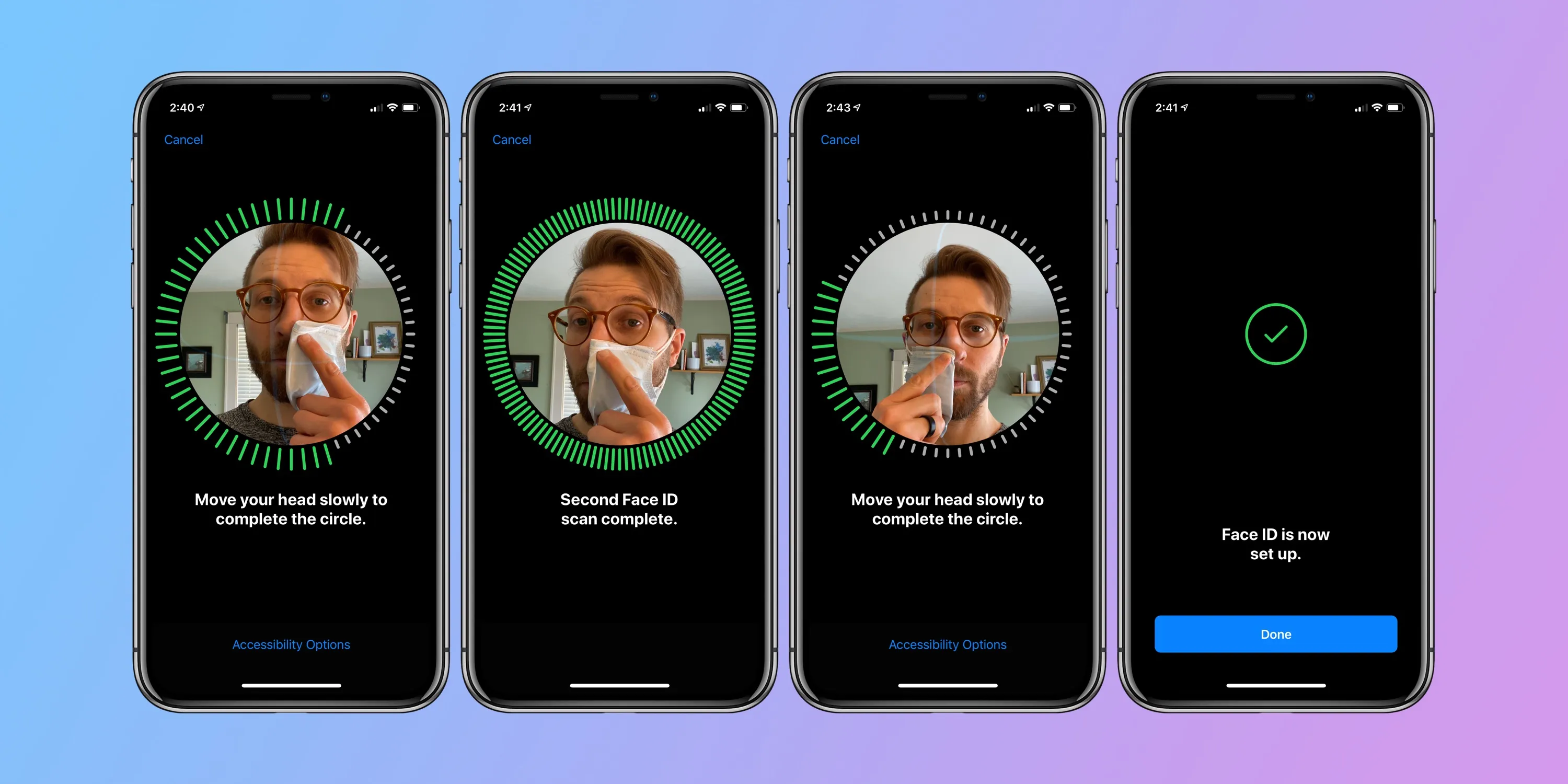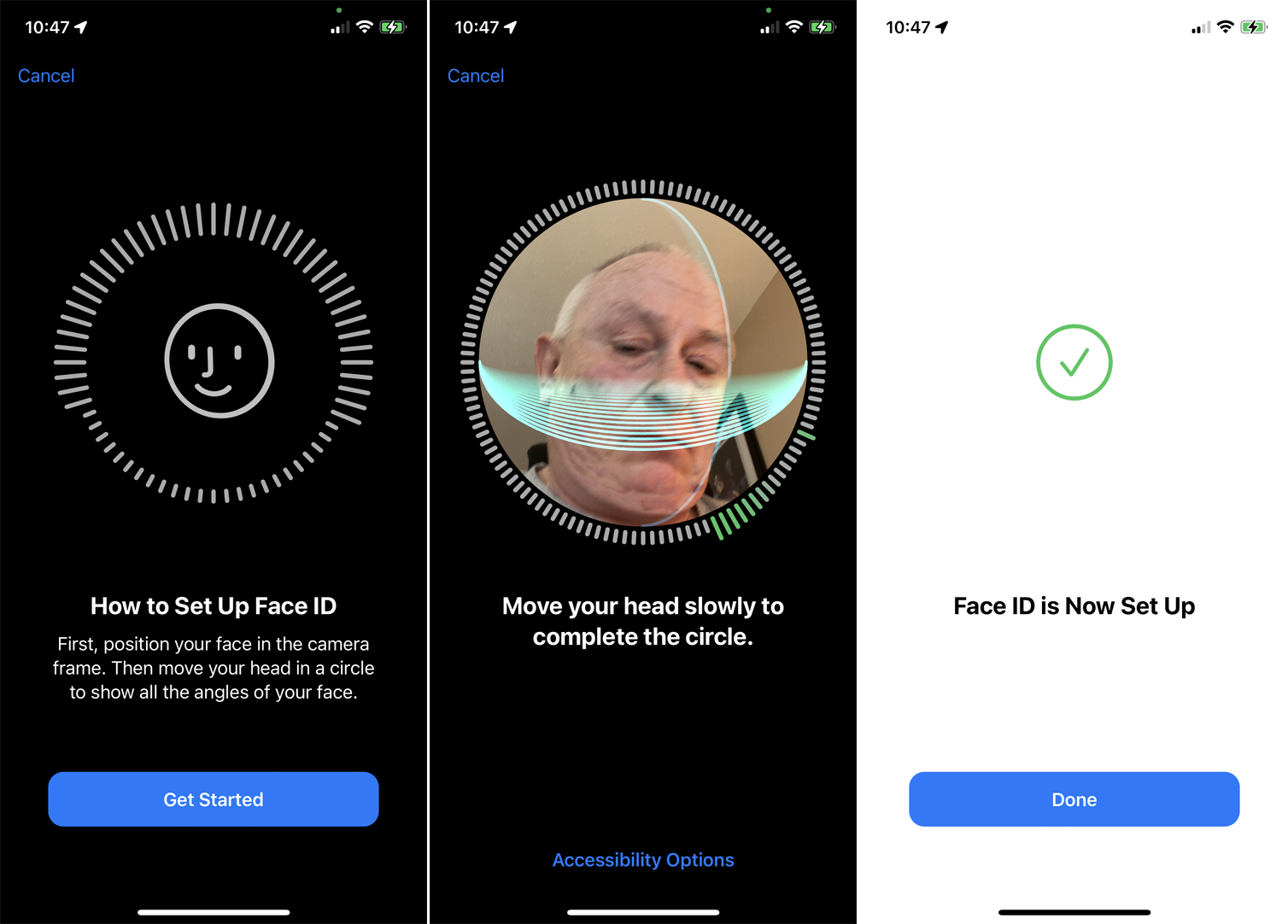Introduction
Welcome to this article on troubleshooting Face ID issues on the iPhone 12. Face ID is a revolutionary facial recognition feature that allows users to unlock their devices and authenticate various actions securely. However, sometimes you might face certain challenges with Face ID not working as expected. In this article, we will explore common reasons why your Face ID may not be functioning properly and provide you with troubleshooting tips to resolve these issues.
Face ID utilizes advanced technology to analyze the unique features of your face, mapping it in three dimensions to create a mathematical representation called a “Face ID data map.” This data is securely stored on your device, and when you attempt to unlock your iPhone 12 or authenticate an action, it compares the real-time facial data captured by the TrueDepth camera with the stored Face ID data map.
When Face ID is working correctly, the device should quickly recognize your face and grant access to your iPhone 12. However, there can be various factors that might interfere with Face ID’s functionality, such as software glitches, environmental conditions, and even certain user behaviors.
In the following sections, we will discuss the common reasons why Face ID may not be working as expected and suggest troubleshooting steps to help you resolve the issue. By following these tips, you can regain the seamless convenience and security that Face ID provides.
How Face ID Works
Face ID is a sophisticated technology that uses the TrueDepth camera system on the iPhone 12 to securely authenticate your identity. Let’s take a closer look at how Face ID works:
Face Mapping: When you set up Face ID, the TrueDepth camera system captures and analyzes over 30,000 invisible dots to create a precise depth map of your face. It also captures an infrared image that reflects the pattern of your face. These data points are combined to create a unique mathematical representation of your face, called a “Face ID data map.”
Secure Enclave: The Face ID data map is encrypted and stored in the Secure Enclave, a dedicated hardware component on your iPhone 12. This ensures that your facial data remains secure, as it is never stored in the cloud or shared with Apple.
Authentication Process: When you attempt to unlock your iPhone 12 or authenticate an action, the TrueDepth camera system captures your real-time facial data. This data is then compared with the stored Face ID data map using complex algorithms to determine if there is a match.
Attention Aware: Face ID incorporates attention awareness, which means your eyes must be open and looking at the device for it to recognize your face. This enhances the security of Face ID by preventing unauthorized access when, for example, someone tries to unlock your iPhone while you are asleep.
Adaptive Learning: Face ID is designed to adapt to changes in your appearance, such as growing a beard, wearing glasses or hats, or even aging. It continuously adjusts its recognition algorithms to ensure reliable authentication.
By understanding how Face ID works, you can appreciate the advanced technology that goes into securing your iPhone 12. However, if you are experiencing issues with Face ID, there may be underlying reasons that need to be addressed. The next section will discuss common reasons why Face ID may not be working as expected and provide troubleshooting tips to help resolve these issues.
Common Reasons for Face ID Not Working
While Face ID is a reliable and convenient feature, there are several reasons why it may not work as expected. Understanding these common reasons can help you troubleshoot the issue effectively. Here are some possible explanations:
Software Issues: Occasionally, software glitches or bugs could affect the performance of Face ID. This can happen after a software update or due to incompatible apps installed on your iPhone 12.
Misalignment of Your Face with the Camera: Face ID requires your face to be properly aligned with the TrueDepth camera system to accurately capture your facial features. If your face is not positioned correctly or if you are too far away or too close to the camera, Face ID may not work as expected.
Wearing Accessories or Glasses: If you frequently wear accessories such as hats, scarves, or masks that obstruct a significant portion of your face, or if you wear glasses with certain types of frames or lenses, Face ID may struggle to recognize your face and fail to authenticate.
Environmental Factors: Poor lighting conditions, strong sunlight, or excessive glare can interfere with the facial recognition process. Additionally, dusty or dirty lenses on the TrueDepth camera system can hinder Face ID from functioning properly.
Unresolved Hardware Problems: In some rare cases, there may be underlying hardware issues with the TrueDepth camera system or other components that affect the performance of Face ID. These issues may require professional assistance to resolve.
By identifying the possible reasons for Face ID not working, you can proceed with troubleshooting steps to address the specific cause. The following sections will provide you with practical tips to troubleshoot Face ID issues on your iPhone 12 and get it working smoothly again.
Software Issues
One of the common reasons why Face ID may not be working on your iPhone 12 is related to software issues. Here are some troubleshooting steps you can take to address these problems:
1. Update iOS: Ensure that your iPhone 12 is running the latest version of iOS. Apple regularly releases software updates that include bug fixes and improvements to ensure the smooth operation of Face ID. To check for updates, go to Settings > General > Software Update.
2. Restart Your iPhone: A simple restart can often resolve minor software glitches. Press and hold the power button and either the volume up or volume down button until the power-off slider appears. Slide it to power off your iPhone, then turn it back on after a few seconds.
3. Reset Face ID: If Face ID still doesn’t work after updating iOS and restarting your device, you can try resetting Face ID. Go to Settings > Face ID & Passcode, enter your passcode, and select “Reset Face ID.” Then set it up again by following the on-screen instructions.
4. Check App Compatibility: Certain apps may not be fully compatible with Face ID, leading to conflicts or issues. If you notice that Face ID only fails in certain apps, contact the app’s developer for assistance or check for any available app updates.
5. Restore iPhone: As a last resort, you can restore your iPhone to its factory settings. This will erase all data and settings, so make sure to back up your device before proceeding. Go to Settings > General > Reset > Erase All Content and Settings. After the reset, set up your iPhone as new or restore it from a backup.
By addressing software issues, you can resolve many Face ID problems on your iPhone 12. However, if the issue persists, there might be other factors at play. The following sections will discuss additional troubleshooting steps to help you identify and resolve Face ID issues related to misalignment, accessories, environmental factors, and potential hardware problems.
Misalignment of Your Face with the Camera
If your face is not properly aligned with the TrueDepth camera system, Face ID may have difficulty recognizing your face and fail to authenticate. Here are some steps you can take to address misalignment issues:
1. Position Your Face Correctly: Make sure that your face is directly facing the front of the iPhone 12. Hold the device at eye level and ensure that your face is centered within the frame. Avoid extreme angles or tilting your head too much, as this can affect Face ID’s ability to accurately capture your facial features.
2. Maintain an Optimal Distance: Face ID works best when you are at a distance of about 10 to 20 inches (25 to 50 cm) from the TrueDepth camera system. Being too close or too far away may result in Face ID not working as expected. Adjust your position accordingly to ensure optimal distance between your face and the camera.
3. Remove Obstructions: Ensure that there are no objects obstructing the TrueDepth camera system, such as your fingers or other items. Clear any debris or dirt from the camera lenses, as this can also affect Face ID’s performance.
4. Check TrueDepth Camera Alignment: If you have recently dropped or mishandled your iPhone 12, there is a possibility that the TrueDepth camera system may have been misaligned. In such cases, it is recommended to visit an Apple Authorized Service Provider or schedule an appointment at an Apple Store for a professional inspection and potential repair.
5. Test Face ID in Different Lighting Conditions: Experiment with different lighting environments to assess if Face ID performs better in certain conditions. Good lighting, preferably natural light, can improve the accuracy and reliability of Face ID. If you are in a poorly lit environment, try adjusting the lighting or use the device’s display to illuminate your face.
By ensuring proper alignment between your face and the TrueDepth camera system, you can significantly improve Face ID’s effectiveness. However, if misalignment is not the issue, the next section will discuss how accessories, such as glasses, hats, or masks, can impact Face ID and provide troubleshooting tips specific to these scenarios.
Wearing Accessories or Glasses
Wearing accessories or glasses can sometimes interfere with Face ID’s ability to accurately recognize your face and authenticate your identity. Here are some troubleshooting steps you can take if you wear accessories or glasses while using Face ID:
1. Remove Accessories: If you regularly wear accessories such as hats, scarves, or masks that cover a significant portion of your face, try removing them before attempting to use Face ID. These accessories can obstruct the TrueDepth camera’s view of your face, making it challenging for Face ID to work correctly.
2. Check Glasses Compatibility: Certain glasses frames or lenses can interfere with the infrared sensors used by Face ID to map your facial features. If you wear glasses, make sure they are compatible with Face ID. Look for glasses with thin frames and avoid reflective or tinted lenses, as they can disrupt the infrared light necessary for Face ID’s operation.
3. Configure Alternate Appearance: If you regularly wear glasses or facial accessories, consider setting up an alternate appearance for Face ID. This allows Face ID to recognize and authenticate your face even when you are wearing these accessories. To do this, go to Settings > Face ID & Passcode > Set Up an Alternative Appearance and follow the instructions provided.
4. Relearn Face ID with Accessories: If you are experiencing persistent issues with Face ID while wearing accessories, you can try resetting Face ID and reconfiguring it while wearing the accessories. This helps Face ID adapt and learn your facial features with the accessories in place. Go to Settings > Face ID & Passcode, enter your passcode, and select “Reset Face ID.” Then, set up Face ID again, ensuring you are wearing the accessories during the setup process.
5. Clean Glasses and TrueDepth Camera: Ensure that both your glasses and the TrueDepth camera lenses are clean and free from dust, smudges, or fingerprints. A dirty lens can negatively impact Face ID’s performance and accuracy. Use a microfiber cloth or lens cleaning solution to clean your glasses and gently wipe the TrueDepth camera lenses if needed.
By following these steps and ensuring compatibility between your accessories, glasses, and Face ID, you can improve the accuracy and reliability of Face ID on your iPhone 12. However, if you are still experiencing issues, the next section will explore environmental factors that may affect Face ID, along with troubleshooting tips to address them.
Environmental Factors
Environmental conditions can play a significant role in the performance of Face ID on your iPhone 12. Certain factors, such as lighting conditions and environmental interference, can affect Face ID’s ability to accurately recognize and authenticate your face. Here are some troubleshooting tips for dealing with environmental factors:
1. Optimal Lighting: Face ID relies on good lighting conditions to capture accurate facial data. Ensure that you are in a well-lit environment when attempting to use Face ID. Natural light is preferable, but if you are indoors, make sure there is sufficient artificial light to illuminate your face.
2. Reduce Glare: Excessive glare or reflections on the TrueDepth camera lenses can interfere with Face ID’s operation. Position yourself in a way that minimizes glare, especially when using Face ID outdoors or near reflective surfaces such as mirrors or glass. Adjusting the angle or moving to a different location can help eliminate glare and improve Face ID’s accuracy.
3. Avoid Strong Sunlight: Direct exposure to intense sunlight can negatively impact Face ID’s performance. Bright sunlight can wash out facial features or cast harsh shadows, making it difficult for the TrueDepth camera to capture accurate data. If possible, try to avoid using Face ID in direct sunlight or find a shaded area for better results.
4. Environmental Interference: Certain environmental factors, such as smoke, steam, or excessive dust, can interfere with the infrared sensors and affect Face ID’s accuracy. If you find yourself in environments with these conditions, consider wiping the TrueDepth camera lenses clean or waiting until the environment clears before using Face ID.
5. Adjust Display Brightness: In low-light conditions, you can use the iPhone’s display to provide additional illumination for your face. Go to Settings > Display & Brightness and increase the brightness level to improve Face ID’s performance in dimly lit environments.
By being mindful of environmental factors and making necessary adjustments, you can enhance the performance of Face ID on your iPhone 12. However, if you have tried these troubleshooting steps and are still encountering problems with Face ID, the next section will discuss potential hardware issues that may require further attention.
Unresolved Hardware Problems
If you have tried troubleshooting software issues, checked for misalignment, and addressed environmental factors, but Face ID still doesn’t work on your iPhone 12, there might be unresolved hardware problems. In such cases, professional assistance or a visit to an Apple Authorized Service Provider may be necessary. Here are some potential hardware problems that could affect Face ID:
1. Damaged TrueDepth Camera System: Physical damage to the TrueDepth camera system can hinder Face ID’s functionality. If your iPhone 12 has been dropped or subjected to impact, it is possible that the TrueDepth camera or its components may be damaged. Consult with an Apple professional who can diagnose and repair any issues with the hardware.
2. Infrared Sensor Malfunction: The infrared sensors on the TrueDepth camera system are crucial for Face ID’s operation. If these sensors are not functioning correctly, it can lead to Face ID-related problems. An Apple technician can help diagnose and resolve any issues with the infrared sensors.
3. Hardware Component Interference: In rare cases, certain hardware components may interfere with the operation of Face ID. It could be related to loose connections, faulty components, or conflicts between different hardware elements. Expert assistance can help identify and resolve these issues.
4. Firmware or Calibration Issues: Sometimes, firmware or calibration issues related to the Face ID system can cause persistent problems. Apple professionals can help diagnose these issues and perform the necessary software updates or recalibrations to resolve the problem.
5. Face ID Hardware Failure: While uncommon, Face ID hardware failure can occur. If Face ID consistently fails to function despite all troubleshooting efforts, it may be necessary to replace the TrueDepth camera hardware or other related components. Consult with an Apple technician to determine the best course of action.
If you suspect unresolved hardware problems are the cause of Face ID not working, contact Apple Support or visit an Apple Authorized Service Provider. They have the expertise and resources to diagnose and resolve hardware issues with Face ID on your iPhone 12.
In the next section, we will provide a series of troubleshooting tips to help overcome Face ID issues that can be resolved without involving hardware interventions.
Troubleshooting Tips for Face ID Issues
If you are experiencing issues with Face ID on your iPhone 12, there are several troubleshooting tips you can try before seeking professional assistance. Here are some practical steps to help you overcome common Face ID problems:
1. Reset Face ID and Set It Up Again: If Face ID is consistently failing or not working as expected, try resetting it and setting it up again. Go to Settings > Face ID & Passcode, enter your passcode, and select “Reset Face ID.” Follow the on-screen instructions to set up Face ID anew.
2. Keep Your iPhone Up-to-Date: Regularly updating your iPhone’s software is essential for maintaining the smooth performance of Face ID. Install the latest iOS updates by going to Settings > General > Software Update. These updates often include bug fixes and improvements that can address Face ID issues.
3. Check for Environmental Interference: Ensure that there are no external factors interfering with Face ID’s operation. Clean the TrueDepth camera lenses, avoid glare or excessive lighting conditions, and minimize obstructions that could affect facial recognition.
4. Remove and Reapply Accessories or Glasses: If you wear accessories or glasses, try removing them and storing them temporarily, then reapply them and let Face ID recalibrate. Make sure they are compatible with Face ID and positioned correctly on your face.
5. Reset All Settings on Your iPhone: If the above steps don’t resolve the issue, you can try resetting all settings on your iPhone. This won’t erase your data, but it will reset your preferences to default settings. Go to Settings > General > Reset > Reset All Settings.
6. Contact Apple Support for Further Assistance: If you’ve exhausted all available troubleshooting options and Face ID still isn’t working properly, contacting Apple Support or visiting an Apple Authorized Service Provider is recommended. They can provide further guidance and assist with hardware-related issues if necessary.
These troubleshooting tips can help you address common Face ID issues on your iPhone 12. By following these steps, you increase the chances of resolving the problem and restoring the reliable functionality of Face ID. However, if the problem persists, seeking professional assistance is the best course of action.
Reset Face ID and Set It Up Again
If you are experiencing persistent issues with Face ID not working correctly on your iPhone 12, one troubleshooting step you can take is to reset Face ID and set it up again. This process can help resolve any software-related conflicts or calibration issues that may be causing the problem. Here’s how you can reset and reconfigure Face ID:
1. Go to Settings: Open the Settings app on your iPhone 12 and tap on “Face ID & Passcode.”
2. Enter Your Passcode: Enter your passcode when prompted to proceed to the Face ID settings.
3. Reset Face ID: Look for the option to “Reset Face ID” and tap on it. This will remove all the existing data associated with Face ID from your device.
4. Set Up Face ID: To set up Face ID again, select “Set Up Face ID” and follow the on-screen instructions. Make sure to position your face properly within the frame and follow the prompts to capture different angles of your face.
5. Complete the Setup: Once you have completed the face scanning process, Face ID will be reconfigured and ready for use on your iPhone 12.
Resetting Face ID can help recalibrate the facial recognition system and resolve any issues related to its configuration. It is important to position your face properly and scan it from various angles during the setup process to ensure accurate and reliable recognition.
It’s worth noting that resetting Face ID will not erase any of your other data or settings on your iPhone 12. It only removes the facial data and configurations associated with Face ID to start fresh.
If Face ID continues to have problems even after resetting and setting it up again, there may be other factors involved, such as hardware issues or compatibility conflicts. In such cases, contacting Apple Support or visiting an Apple Authorized Service Provider is recommended for further assistance.
By resetting and reconfiguring Face ID, you give yourself the opportunity to resolve any potential software-related issues and restore the functionality of this convenient and secure authentication feature on your iPhone 12.
Keep Your iPhone Up-to-Date
Keeping your iPhone 12 up-to-date with the latest software updates is essential for maintaining the smooth performance of Face ID. Apple regularly releases new versions of iOS that include bug fixes, security enhancements, and improvements to various system components, including Face ID. Here’s why it’s important to update your iPhone:
1. Bug Fixes and Enhancements: Each software update addresses known issues and bugs that could affect the functionality of Face ID. These updates also include enhancements to improve system stability and performance.
2. Security Updates: Apple prioritizes the security of its devices, and software updates often include critical security patches. Keeping your iPhone 12 up-to-date ensures that you have the latest security measures in place to protect your personal data, including the Face ID biometric authentication.
3. Compatibility with Apps: App developers regularly update their apps to work seamlessly with the latest iOS versions. By keeping your iPhone up-to-date, you ensure that Face ID works smoothly with all your installed apps, minimizing compatibility issues.
4. New Features and Performance Improvements: Software updates may introduce new features, functionality, and performance optimizations across the system. These improvements can enhance the overall experience of using Face ID and your iPhone 12.
To check for available software updates and keep your iPhone 12 up-to-date, follow these steps:
1. Open Settings: Launch the Settings app on your iPhone 12.
2. Go to General: Scroll down and tap on “General.”
3. Select Software Update: Tap on “Software Update,” and if an update is available, you will see a prompt to download and install it.
4. Install the Update: Follow the on-screen instructions to download and install the latest software update on your iPhone 12. Make sure you have a stable internet connection and sufficient battery life before starting the update process.
By regularly updating your iPhone 12, you ensure that Face ID is functioning optimally and benefiting from the latest improvements and security measures. Software updates not only address known issues but also provide new features and enhancements that enhance the overall user experience of Face ID.
If you are experiencing persistent issues with Face ID even after updating your iPhone, try other troubleshooting steps or contact Apple Support for further assistance.
Check for Environmental Interference
Face ID relies on the clear and accurate detection of your facial features by the TrueDepth camera system. However, certain environmental factors can interfere with Face ID’s operation and prevent it from working correctly on your iPhone 12. Here are some steps you can take to check and minimize environmental interference:
1. Clean the TrueDepth Camera Lenses: Fingerprints, smudges, or dirt on the TrueDepth camera lenses can obstruct the infrared sensors and affect Face ID’s performance. Gently wipe the lenses with a clean, lint-free cloth to remove any dirt or debris that may be obstructing the camera’s view.
2. Avoid Excessive Glare or Bright Light: Glare from direct sunlight or bright artificial light can interfere with Face ID’s ability to accurately detect your facial features. Whenever possible, position yourself and your iPhone 12 so that light sources do not cause excessive glare or reflections on the TrueDepth camera lenses. Adjusting your position or moving to a different area can help minimize glare.
3. Consider Lighting Conditions: Face ID works best in well-lit environments. If you are in a dimly lit area or in complete darkness, Face ID may struggle to identify your face accurately. In such cases, try using your iPhone’s display to provide additional illumination for your face. You can increase the brightness by going to Settings > Display & Brightness.
4. Minimize Environmental Interference: Certain environmental factors, such as smoke, steam, or excessive dust, can affect the infrared sensors used by Face ID. If you find yourself in an environment with these conditions, try to minimize their impact by moving to a cleaner or less obstructed area.
5. Check for Obstructions: Make sure that there are no physical obstructions blocking the TrueDepth camera system. Ensure that your fingers or any objects are not covering the camera lenses or obstructing the sensors.
By checking for and minimizing environmental interference, you can improve Face ID’s accuracy and increase the chances of successful authentication on your iPhone 12.
It’s important to note that while minimizing environmental interference can enhance Face ID’s performance significantly, there may be situations where Face ID may not work optimally due to challenging environmental conditions. In such cases, you may need to reposition yourself, adjust lighting, or resort to an alternative authentication method, such as using your passcode.
If you have taken the necessary steps to minimize environmental interference and are still experiencing issues with Face ID, continue with other troubleshooting tips or contact Apple Support for further assistance.
Remove and Reapply Accessories or Glasses
If you wear accessories or glasses while using Face ID on your iPhone 12, it is important to ensure that they do not interfere with the facial recognition process. Here are some troubleshooting steps you can take to address issues related to accessories and glasses:
1. Remove Obstructing Accessories: Accessory items such as hats, scarves, or masks that cover a significant portion of your face can obstruct the TrueDepth camera’s view and prevent Face ID from working effectively. To troubleshoot, remove the accessories and try using Face ID again to see if it improves the recognition and authentication process.
2. Check Glasses Compatibility: If you wear glasses, it’s essential to ensure they are compatible with Face ID. Certain frames or lenses can interfere with the infrared sensors used by Face ID, making it challenging for it to accurately recognize your face. Look for glasses with thin frames and lenses that do not obstruct the sensors or cause reflections.
3. Adjust Glasses Position: Sometimes, a minor adjustment in the position of your glasses can make a difference in Face ID’s performance. Pushing your glasses slightly higher on your nose or adjusting the angle can help the TrueDepth camera capture a clear view of your facial features.
4. Configure Alternate Appearance: If you regularly wear accessories or glasses that obstruct your face, you can set up an alternate appearance for Face ID. This allows Face ID to recognize and authenticate your face even when you are wearing these accessories. To set up an alternate appearance, go to Settings > Face ID & Passcode > Set Up an Alternative Appearance and follow the on-screen instructions.
5. Clean Glasses and the TrueDepth Camera: Ensure that both your glasses and the TrueDepth camera lenses are clean and free from smudges, dirt, or debris. Dirty lenses can interfere with Face ID’s accuracy. Use a microfiber cloth or lens cleaning solution to clean your glasses, and gently wipe the TrueDepth camera lenses if needed.
By removing and reapplying accessories, adjusting glasses position, and ensuring compatibility and cleanliness, you can improve the performance of Face ID while wearing accessories or glasses on your iPhone 12.
It’s important to note, however, that in some cases, heavily obstructive accessories or glasses may still pose challenges for Face ID, and it may be necessary to resort to an alternative method of authentication, such as using your passcode.
If you continue to experience issues with Face ID even after troubleshooting, explore the next sections for additional troubleshooting tips, or consider reaching out to Apple Support for further assistance.
Reset All Settings on Your iPhone
If you are still encountering issues with Face ID on your iPhone 12, resetting all settings can help resolve potential software conflicts that might be affecting its functionality. Resetting all settings will revert your iPhone back to its default configuration while preserving your personal data. Here’s how you can perform a reset of all settings:
1. Open Settings: Launch the Settings app on your iPhone 12.
2. Go to General: Scroll down and tap on “General.”
3. Select Reset: Tap on “Reset” at the bottom of the General settings page.
4. Choose Reset All Settings: Tap on “Reset All Settings” and enter your passcode if prompted to confirm the action.
5. Confirm the Reset: A warning message will appear, informing you that this action will reset all settings to their factory defaults. Tap on “Reset All Settings” again to proceed.
6. Wait for the Reset: Your iPhone will now reset all settings and may take a few moments to complete the process. Once finished, your device will restart.
It’s important to note that resetting all settings will not delete any of your personal data or media. However, it will reset all settings you have customized, including network settings, display settings, privacy settings, and Face ID configurations.
After the reset, you will need to reconfigure your iPhone’s settings according to your preferences. This includes setting up Face ID again by going to Settings > Face ID & Passcode. Follow the on-screen instructions to scan your face and personalize the Face ID settings to your liking.
Performing a reset of all settings can help resolve any software conflicts or configuration issues that might be hindering Face ID’s performance. It provides a fresh start to the settings on your iPhone and allows you to set up Face ID from scratch.
If the issue with Face ID persists even after resetting all settings, there could be other underlying factors at play. Continue with other troubleshooting steps or consider reaching out to Apple Support for further assistance.
Contact Apple Support for Further Assistance
If you have tried all the troubleshooting steps mentioned earlier and are still experiencing persistent issues with Face ID on your iPhone 12, it may be time to seek further assistance from Apple Support. Their team of experts can provide specialized guidance and diagnose any potential hardware or software problems that may be affecting Face ID. Here’s how you can reach out to Apple Support:
1. Visit the Apple Support Website: The Apple Support website is a valuable resource for troubleshooting and finding answers to common issues. Visit support.apple.com and navigate to the iPhone section to access a range of helpful support articles.
2. Contact Apple Support via Phone: If you prefer direct assistance, you can contact Apple Support by phone. Go to support.apple.com/contact and select your location to find the appropriate contact number. Explain the issue you are facing and follow the instructions provided by the support representative.
3. Schedule an Appointment at an Apple Store: Booking an appointment at an Apple Store Genius Bar or an Apple Authorized Service Provider is another option. They have trained technicians who can evaluate your iPhone 12 and provide professional assistance in diagnosing and resolving any hardware-related issues.
4. Utilize Apple Support Communities: The Apple Support Communities are online forums where users can ask questions and get help from other Apple users and Apple Support team members. You can navigate to discussions.apple.com to seek guidance, share your experiences, and find solutions from the community.
When contacting Apple Support, make sure you provide detailed information about the Face ID issue you are experiencing. Explain the troubleshooting steps you have already taken, as this can help expedite the resolution process.
Apple Support is dedicated to ensuring customer satisfaction and will work with you to diagnose the issue and provide appropriate solutions. Whether it’s a software-related problem, hardware malfunction, or compatibility issue, their expertise can help determine the best course of action for resolving the Face ID problem on your iPhone 12.
Remember, Face ID is a sophisticated technology, and in some cases, professional assistance may be necessary. Don’t hesitate to reach out to Apple Support for further assistance if you have exhausted all available troubleshooting options.
Conclusion
Face ID is a cutting-edge biometric authentication feature that offers convenience and security on the iPhone 12. However, if you encounter issues with Face ID not working as expected, there are several troubleshooting steps you can take to address the problem. By understanding the common reasons why Face ID may fail and following the provided troubleshooting tips, you can improve its accuracy and functionality.
In this article, we explored various factors that can affect Face ID, including software issues, misalignment with the camera, wearing accessories or glasses, environmental interference, and potential hardware problems. We discussed practical techniques such as resetting Face ID, keeping your iPhone up-to-date, checking for environmental interference, removing and reapplying accessories or glasses, resetting all settings, and contacting Apple Support for further assistance.
Remember, it’s important to ensure that your iPhone 12 is running the latest software version and to position your face properly within the TrueDepth camera frame. Check for environmental factors such as lighting conditions, glare, or obstructions that may affect Face ID’s performance. Adjust or remove any accessories or glasses that may hinder Face ID recognition, and consider resetting Face ID or all settings if necessary.
If you have tried all the troubleshooting steps and continue to experience issues, don’t hesitate to contact Apple Support for expert assistance. Their knowledgeable staff can help diagnose and resolve any hardware or software-related problems that may be affecting Face ID on your iPhone 12.
Face ID is a remarkable feature that combines advanced technology and convenience. By following the troubleshooting tips in this article and seeking appropriate support when needed, you can regain the seamless authentication and security that Face ID offers, enhancing your overall iPhone 12 experience.







